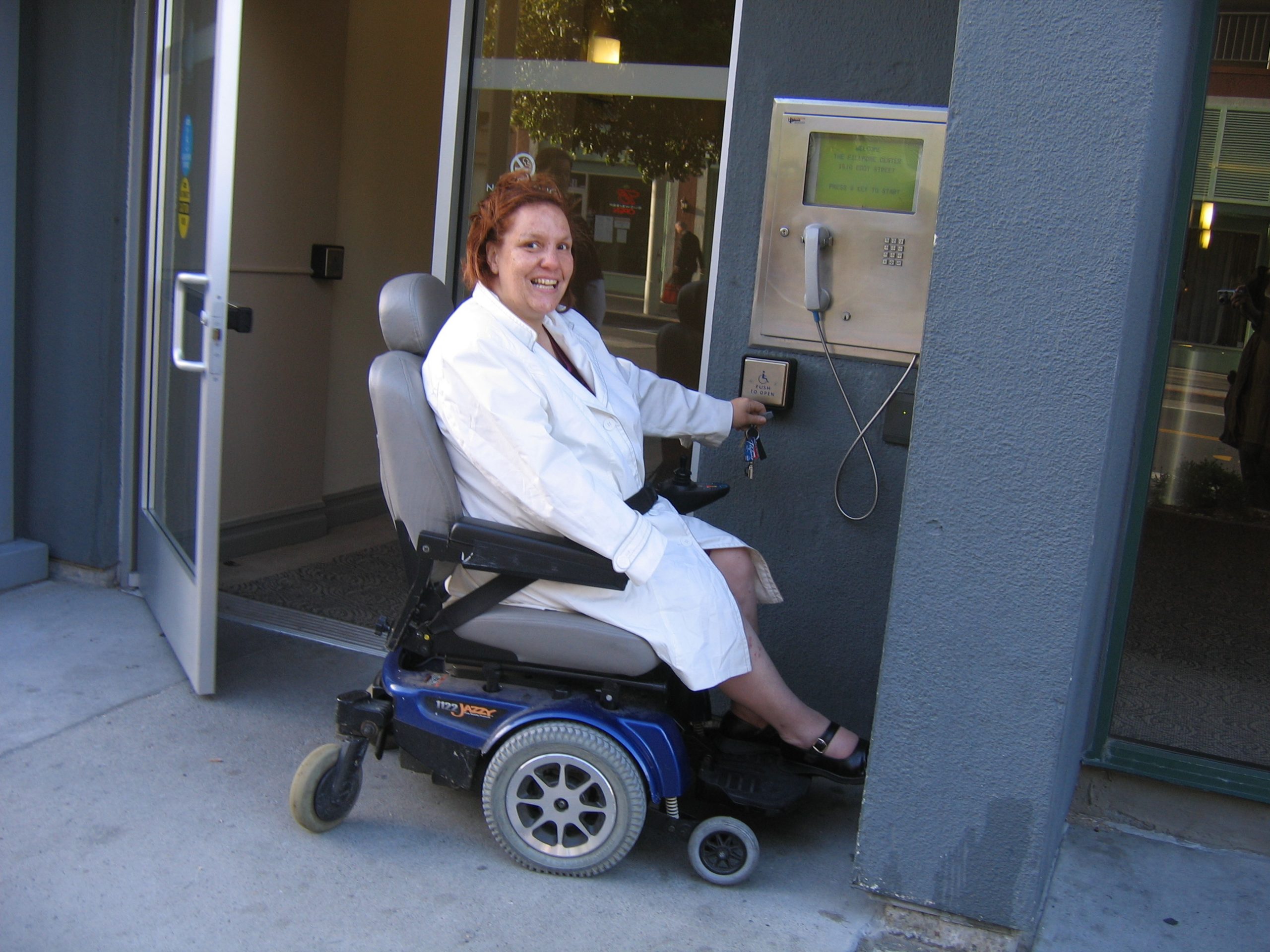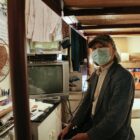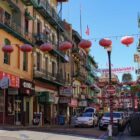By Cecily O’Connor, RedwoodAge.com
For almost a year, boomer Tricia Webb has enjoyed an automatic door at the front entrance of her San Francisco apartment building.
She fought hard for that door. Webb, who sits in a wheelchair, lobbied her landlord for the door for five years, but her requests were denied due to cost.
 |
| Tricia Webb led an effort to get an electric door that helps her neighbors, too. (CLC) |
The effort finally gained momentum over a year ago when she became part of the Community Living Campaign (CLC), a group that support seniors and adults with disabilities. The CLC-sponsored a bake-sale that was attended by district supervisors and other civic leaders.
The event "embarrassed (the landlord) so bad," that he eventually green-lighted the door, Webb said.
And that automatic entry has not only made Webb’s life easier, but also helped her neighbors, including parents with strollers. "When we got the automatic door, it wasn’t about me anymore," Webb said.
Webb’s experience illustrates how members of the community are raising awareness of increased aging and disability needs — many of which cities can’t address due to financial pressures and limited resources.
"Government is not really capable of meeting all the needs of our elders," added Carolyn Rosenblatt, a registered nurse and attorney who counsels families on aging issues through Help With Elders in San Rafael, California. "It can fund certain essential things, like providing low-income housing, (but) in a very limited amount."
That’s why the need for grassroots initiatives is critical, especially when it comes to helping people live in their own homes, establish relationships that prevent isolation, achieve financial security, embrace diversity and contribute to the well-being of others. Hearing that loud call, various groups nationwide are fundraising, building awareness and exploring creative ideas that support age-friendly living.
In parts of Northern California, some of the work centers on intergenerational collaboration. For example, retiring boomers have valuable skills in healthcare, education and other fields. These talents can be channeled through volunteer efforts, bolstering the ability of neighborhoods to offer health and daycare services — without turning to government for support. The younger generation can return the favor by helping elders with shopping, transportation or companionship.
"It’s not all about (providing) money or services," said Marie Jobling, CLC project coordinator.
CLC is helping to test an online social and personal networking site called Tyze. In San Francisco, Tyze operates about about 14 social networks, made up of volunteers who rally around individuals like Webb and create a community of support. They do things like organize dinners and movie nights, even plan birthday parties.
"Before you know it, you have a whole group of people and you’re no longer isolated," said Webb, 49. "They all come visit and they always bring me food."
Outside of Tyze, there are several examples of groups aiming to integrate seniors and disabled individuals into day-to-day life. In Sacramento, the Caring Neighborhoods program pairs neighbors with older residents to help mow the lawn or run to the store. A similar program operates in San Francisco’s Chinatown, calling upon youth to deliver groceries.
Caregiver needs also aren’t overlooked. In San Rafael, Rosenblatt’s Help With Elders group has become a one-stop shop for families with aging parents, organizing low-costs drop-in workshops that include experts on psychology, housing, caregiving, health, hospice care, finance and more.
Senior roundtable
The wisdom of elders is a big part of shaping community initiatives and involvement. Vallejo has a senior roundtable that meets monthly with various civic leaders to discuss current needs, and potential solutions.
Vallejo City Council member Tom Bartee, who facilitates the meetings, said he’s speaking with the mayor about fundraising to establish a community chest. The idea is still in preliminary stages, but it could disperse money to Vallejo’s senior center and other groups in need.
However, fundraising isn’t easy, especially in the current climate. As part of Seniors, Inc. some Santa Rosa residents have been at it since 2002, collecting about $7 million (including in-kind donations) so far to construct a new senior wing at the community center. Currently, the city’s only senior center is housed in an 80-year-old building, with the capacity to serve about 750 seniors a week. But more space is needed to accommodate Santa Rosa’s rising older adult population.
The Seniors group, which is about $3 million shy of its total goal, continues to hold frequent fundraisers.
"We’re just going to keep pushing along and we’re going to make it happen," said Carolina Scence, director of community outreach. "The time frame may not be as quick as we’d like."
Fundraising may not be the only challenge groups face if the economy continues to falter. Public service demands are bound to rise, too, directed at mental health, unemployment, housing or counseling, said Max Nyman, associate director and senior fellow at the California Public Policy Institute.
"In times of economic stress, some of (residents) difficulties become more intense," Nyman said.
That’s one of the reasons why Santa’s Rosa’s Health Action Committee has come up with an early initiative that would pair residents with a clinic, nurse, or other health provider to ensure individuals have consistent records of care, said Shirlee Zane, chief executive officer of Santa Rosa’s Council on Aging.
"That’s going to be a challenging initiative, but there needs to be some real energy put into that," Zane said.
What would you do?
It’s those kinds of out-of-box ideas that are critical right now to ensure vulnerable residents don’t slip through the cracks.
For anyone thinking about how to fill a need in their community, Rosenblatt offered some tips:
- Look within, and ask, "What am I good at? What are my talents?"
- Educate yourself about the boundless volunteer opportunities, and then volunteer.
- Consider what you would want as an aging individual. Think about what you would do, if for example, you couldn’t drive. What would you like to have someone help you do?
Now is the time to ask these questions, before the longevity revolution hits.
Read the Entire Series
- Main Article
- Part 1: A Gray Wave Hits Home
- Part 2: Baby Steps on a Long Road
- Hear reporter Cecily O’Connor interviewed on KALW Radio (1/26/09)
Cecily O’Connor is a senior writer for RedwoodAge.com, a news site for readers over 40. This report was produced by RedwoodAge with financial support from the community-funded journalism site Spot.us.










